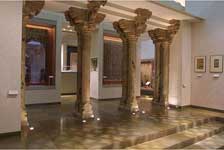
The outstanding South Asia collection in the V & A includes a broad chronological range of material. Of particular interest here are the Buddhist and Mughal parts of the collection. For an overview of the gallery, click here.
Victoria and Albert Museum, London :: South Asia collection | [Return to Index] |
 | The outstanding South Asia collection in the V & A includes a broad chronological range of material. Of particular interest here are the Buddhist and Mughal parts of the collection. For an overview of the gallery, click here. |
Click on thumbnail for full view


| Railing pillar. India, Bodhgaya. Ca. 1st c. BCE-1st c. CE. From site of the Mahabodhi Temple, from earliest surviving railing marking the path of circumambulation. On one face, a scene possibly from Hamsa Jataka with the winged elephant; on the other, worshippers before a sacred pipal tree. IS.1065-1883. |

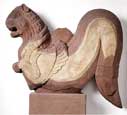
| Capital in the form of a winged lion. India, Mathura. Kushana period, late 1st-early 2nd c. CE. Red sandstone. Possibly associated with the Hindu agricultural deity Balarama. IS.712-1883. Pub.: Stanislaw J. Czuma, Kushan Sculpture: Images from Early India (Cleveland Museum of Art, 1985), no. 9, p. 61 |
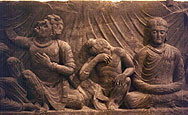
| Death of the Buddha (Parinirvana), detail. Pakistan, Gandhara, Kushana. 2nd-3rd c. CE. The meditating figure is probably Subhadra. IS 7-1948 |

| Reliquary in the form of a stupa. Pakistan, Gandhara, Takht-i Bahi. Kushana period, 2nd-3rd c. CE. |
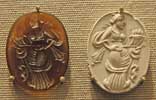
| Seal, with image probably of goddess Hariti. Northern India or Pakistan. Kushana. Ca. 2nd-4th c. CE. Sardonyx. Carving technique is Indo-Iranian. IS 46+A-1948 |


| Earrings. Pakistan, Taxila (?). Kushana, Ca. 1st-2nd c. CE. Sardonyx. Gold, semi-precious stones. IS 17, 18-1948 |

| Head of the Buddha Gandhara, Khyber Pass region. 4th-5th c. Face is cast using a mould; traces of polychrome. IS 42-1994 |

| Reliquary in the form of a stupa Found in 1851 in an earthenware vessel in Stupa no. 2, Bhojpur, Madhaya Pradesh, Central India (6 ½ miles from Sanchi). Late Maurya period, late 3rd-2nd c. BCE. Rock crystal. IM.223-1931. |

| The Bodhisattva Avalokitesvara Discovered in 1883 in the excavation of the western gateway of Stupa no. 1, Sanchi, India. Ca. 900 CE. Sandstone. IM.184-1910. |

| Buddhist goddess Sitatara Nepal. 14th c. Painted and gilded copper. IM.239-1927. |
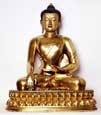
| Buddha Shakyamuni Tibet. 18th c. IM.227-1920. |
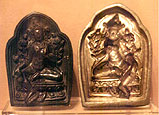
| Mould for clay images of Tara Tibet. 18th c. IS 79-1991. |


| Padmapani, the Lotus Bearer Nepal. Late 14th-early 15th c. Gilded copper. IM.239-1922. |


| Wine cup Mughal. 1022AH/1613-1614CE. Green nephrite. Persian inscription on rim: "From King Jahangir, the world found order. By the ray of his justice, the age was illuminated. From the reflection of red wine, may the cup of jade always be like a ruby." |

| Thumb ring of Shah Jahan Mughal, probably Delhi or Agra. Dated 1042/1632. White nephrite jade with gold lettered inscription as on the white nephrite wine cup of Shah Jahan. IS 1023-1871 |
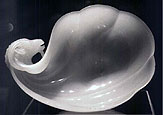

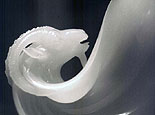
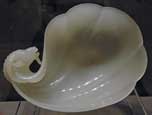
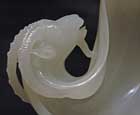
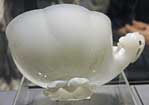
| Wine cup of Mughal Emperor Shah Jahan Dated 1067/1657, with an inscription in Persian, "Second Lord of the Conjunction," which is also found on the white jade thumb ring. The inscription refers to the Mughal ancestor Timur (Tamerlane), who called himself thus by the old formula for rulers of Iranian lands, the conjunction being that of the sun and the moon. White nephrite jade. "Perhaps the finest known example of Mughal hardstone carving." IS.12-1962. Learn more. |
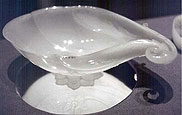



| Wine cup Mughal, period of Shah Jahan (1628-1658). White nephrite jade. IS 02561 |
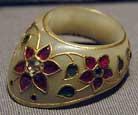
| Thumb ring Mughal. 17th c. White nephrite jade, set with emeralds, ruby and diamond. IS 23-1997 |
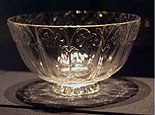
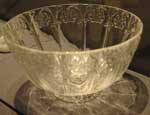
| Bowl carved with lilies. Mughal, period of Shah Jahan (1628-1658). Rock crystal. 986-1875 |
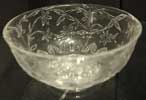
| Bowl. India, Mughal. Early 18th c. Rock crystal. IS 02609 |


| Spoon. Mughal. Ca. 1660. Gold, engraved and set with rubies, diamonds and emeralds. Decoration mainly Iranian, although the form is European. Indian influences are in the engraving of gold between the gems on the back and in the technique of setting the stones. For another Mughal gold spoon, IS.34-1925, click here. |


| Dagger. India, Mughal. 17th c. Handle of green nephrite, decorated with gold, rubies. IS.02566. Learn more, but note the detailed photos of handle have a bizarre red color cast. A similar dagger is in the Louvre OA 7891. |

| Mirror. India, Mughal. Dark green nephrite, inlaid with white jade, rubies and gold. IS.02587. Cf. Louvre R 449. |

| Bottle. India, Mughal. Early 18th c. Blown blue glass with gilt decoration. |

| Tippoo's Tiger Mysore. 1790s. Came into the possession of the East India Company after the death of Tippoo Sultan in 1799 at the Battle of Seringapatam. The mechanical beast contains an organ which produces a roaring sound as it eats the European. IS.2545. |
Revised January 18, 2009